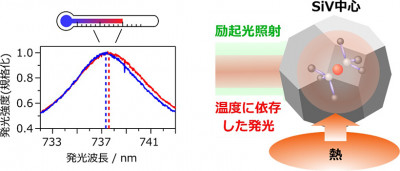2022-07-20 スイス連邦工科大学ローザンヌ校(EPFL)
地球温暖化により、熱波がますます頻繁に起こるようになっています。同時に、2050年までに建物のエネルギー使用量と二酸化炭素排出量を削減することが、世界的な課題となっています。そのため、建物の熱的快適性を戦略的・経済的に優先させることの重要性がクローズアップされています。
オープンスペース全体を標準温度に維持するのではなく、オフィスのデスクごとに個別の冷暖房を提供することの利点が強調されています。
収集した人間の熱生理学的データから、通常のオフィス環境では個人によって熱的快適性のレベルが大きく異なることを発見し、この結論に達しました。
<関連情報>
- https://actu.epfl.ch/news/one-step-closer-to-providing-customized-climate-co/
- https://onlinelibrary.wiley.com/doi/10.1002/oby.23454
ヒトの体温調節の個人間変動。室内温熱環境のパーソナライズド・エルゴノミクスに向けて Interindividual variability of human thermoregulation: Toward personalized ergonomics of the indoor thermal environment
Dolaana Khovalyg,Yann Ravussin
Obesity Journal Published: 23 June 2022
DOI:https://doi.org/10.1002/oby.23454

Abstract
Objective
The study was undertaken to show the magnitude of interindividual differences in energy expenditure (i.e., heat production) under normal living conditions with the aim of providing physiological evidence to support the advancement of a personalized thermal conditioning approach.
Methods
Three sets of experimental protocols with six participants were conducted at neutral and mild cold temperatures. Energy expenditure, local skin temperatures, and core body temperature were measured continuously, while cognitive performance and thermal sensation were surveyed intermittently. The protocols were designed to study the effects of several normal day activities, low-level physical activity and eating a meal, on metabolic and physiological parameters.
Results
Large interindividual differences among the subjects were demonstrated using non-normalized data by design. The resting metabolic rate difference was 58%, the percentage change in energy expenditure during standing compared to sitting was up to 31%, and the difference in mechanical work efficiency between the least and the most efficient individual was 39.1%. Energy expenditure increase due to the meal effect was 11.2% to 23.3% at neutral and 9.9% to 33.9% at mild cold temperatures across individuals.
Conclusions
Large interindividual differences in metabolic rate under typical everyday living and office activities suggest facilitating personalized thermal conditioning instead of providing uniform temperature. Therefore, it is necessary to find noninvasive markers that can be easily measured and used as surrogates for human heat production to individualize the climate control of buildings.



